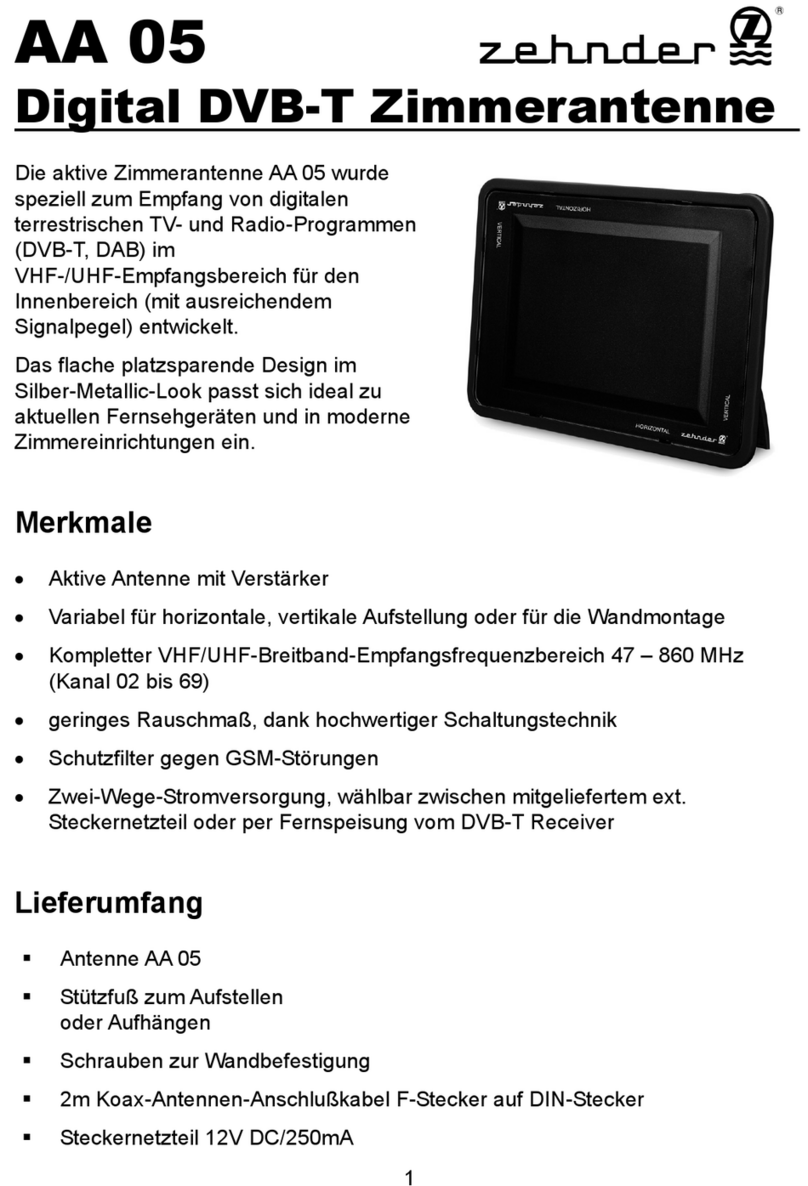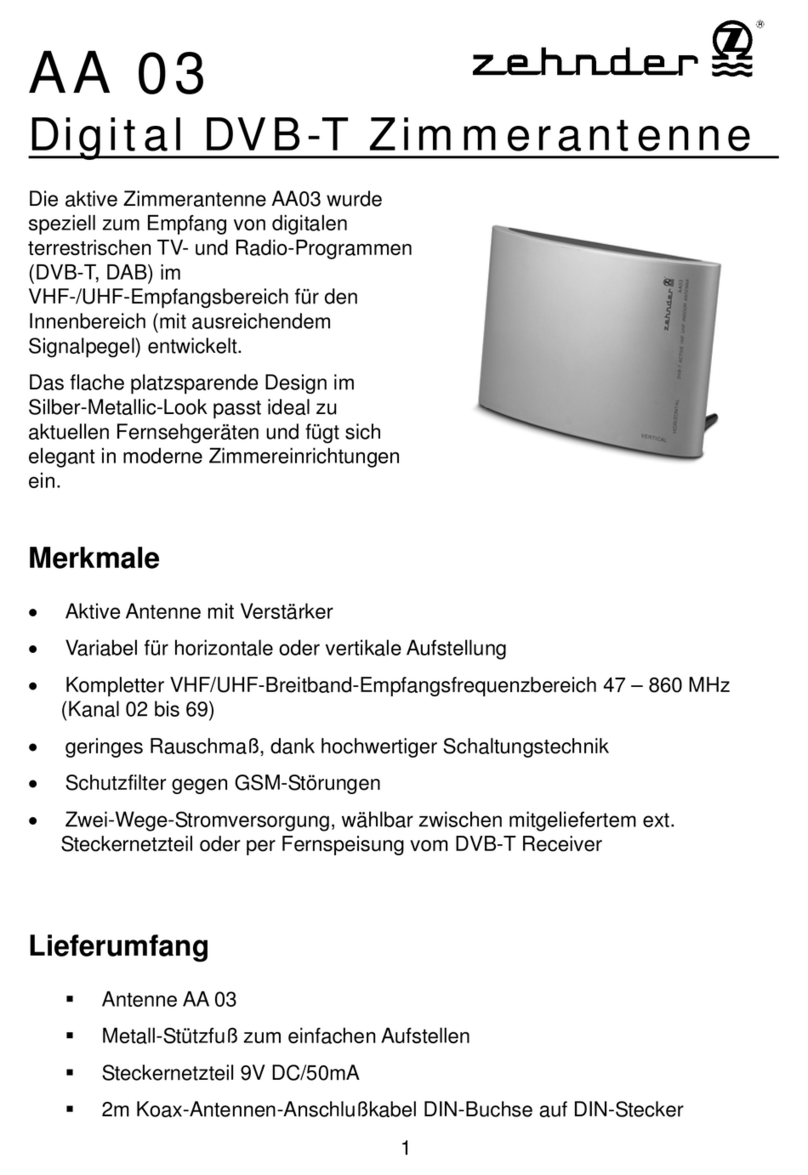Azimutwinkel
Elevations-
winkel
Fernsehgerät SAT-Receiver Bild 2
6
5
2. Elevationswinkel
Der Elevationswinkel wird auf 30° voreingestellt. Das erleichtert das
Auffinden des Satelliten ASTRA in Deutschland. In südlicheren Regionen
wird ein gerinfügig größerer und in nördlicheren Regionen ein kleinerer
Elevationswinkel erforderlich. Angaben hierzu befinden sich in der
Standort-Tabelle.
3. TV-Kanal einstellen
Generell empfehlen wir Scart-Kabel zwischen Receiver und TV-Gerät,
einzusetzen, dann kann folgende Prozedur entfallen!
Receiver und TV-Gerät müssen zuerst aufeinander abgestimmt werden.
Es wird empfohlen die Bedienungsanleitung des Receivers zu Hilfe zu
ziehen. Nachdem ein Platz für die MULTIMO gefunden wurde, müssen
über das SAT-Kabel MULTIMO und Receiver verbunden werden. Stecker
sind am Kabel bereits vorhanden.
Der F-Stecker mit der Tülle gehört an den LNB. (Bild 2)
Es geht aber auch ohne Kompass.
(Bild 3)
Richten Sie die MULTIMO nach
Süden aus. Dann drehen Sie
die MULTIMO langsam nach
links in östlicher Richtung bis am
Fernsehgerät ein Bild erscheint.
Bewegen Sie die ganze Antenne
langsam nach links und rechts, um
die Bild-qualität zu optimieren.
Lösen Sie die Flügelschraube der
Elevationseinstellung und be-
wegen Sie den LNB-Halter leicht
nach oben und unten, um die
Bildqualität weiter zu optimieren.
Diese Einstellung bitte nicht am Parabolspiegel, sondern am LNB-Halter
durchführen, damit Beschädigungen am Spiegel vermieden werden.
Anschließend die Flügelschraube wieder anziehen.
Für die Inbetriebnahme werden jetzt alle Geräte eingeschaltet. Am
Receiver muß ein Programmplatz gewählt sein, der die Frequenz
des gewünschten Programms und Satelliten hat. Es folgen nun die
Einstellungen von Azimuth und Elevation .Um die Einstellung zu
erleichtern sollten Sie, falls möglich, am Receiver die AFC (automatische
Frequenzeinstellung) ausschalten.
4. Feineinstellung
Beim Ausrichten der Antenne darf die freie Sicht zum Satelliten nicht
durch den Einsteller verdeckt werden. Die Antenne im Azimut langsam
verdrehen. Falls Sie einen Kompass zur Hand haben, können Sie die
MULTIMO mit ihm und der Standort-Tabelle leichter ausrichten.
Elevation
Azimut
LNB-
Halter
Bild 3
Detail: Flügelschraube und Elevationsgradskala
5. Polarisationsentkopplung
Je nach Standort muß zur Bildoptimie-
rung der LNB, wie in Bild 4 gezeigt,
verdreht werden. Dadurch wird die opti-
male Polarisationsentkopplung einge-
stellt.
Achten Sie bei dieser Einstellung darauf,
daß Sie den Standfuß der Antenne nicht
mehr verschieben.
Vergewissern Sie sich jetzt , daß Sie den gewünschten Satelliten
empfangen, indem Sie am Receiver andere Programme einschalten.
Bild 4































